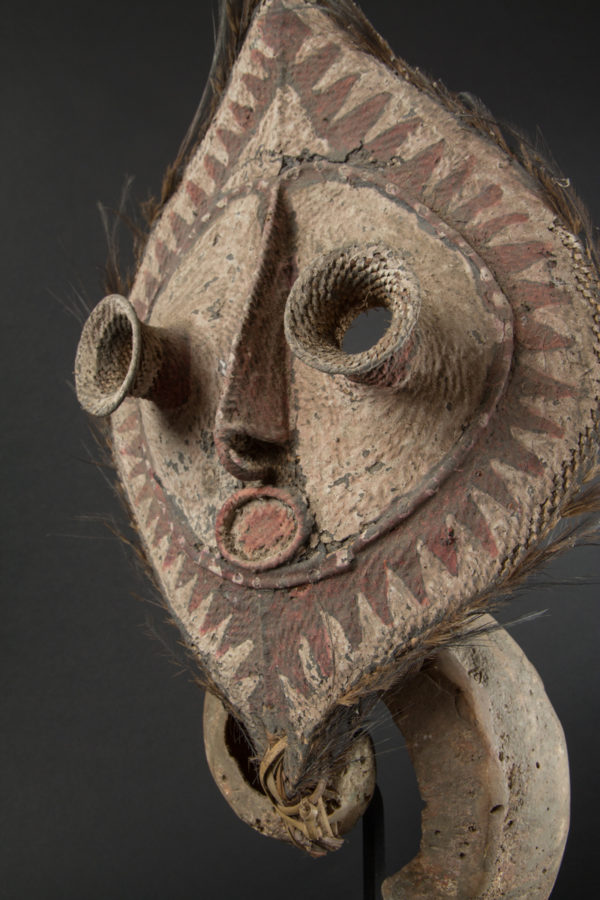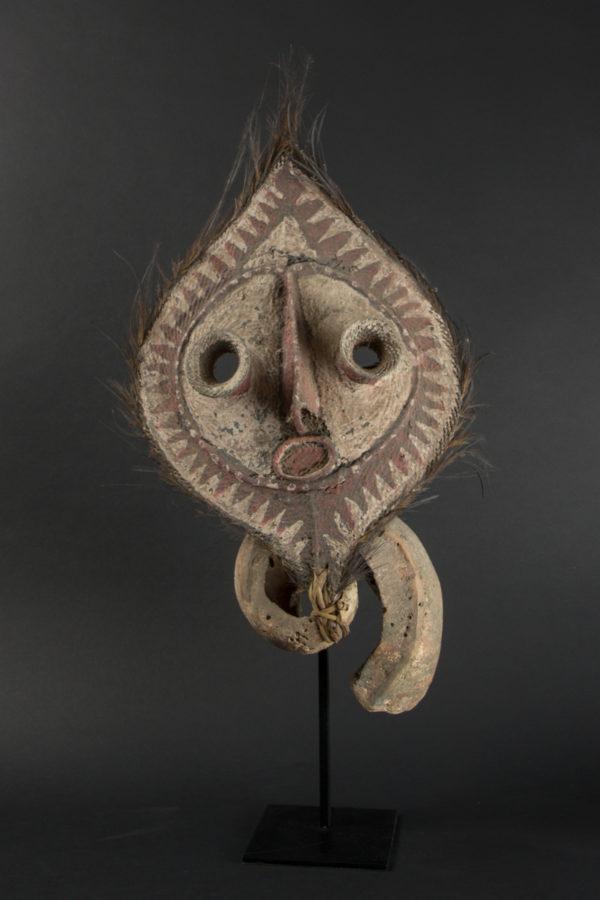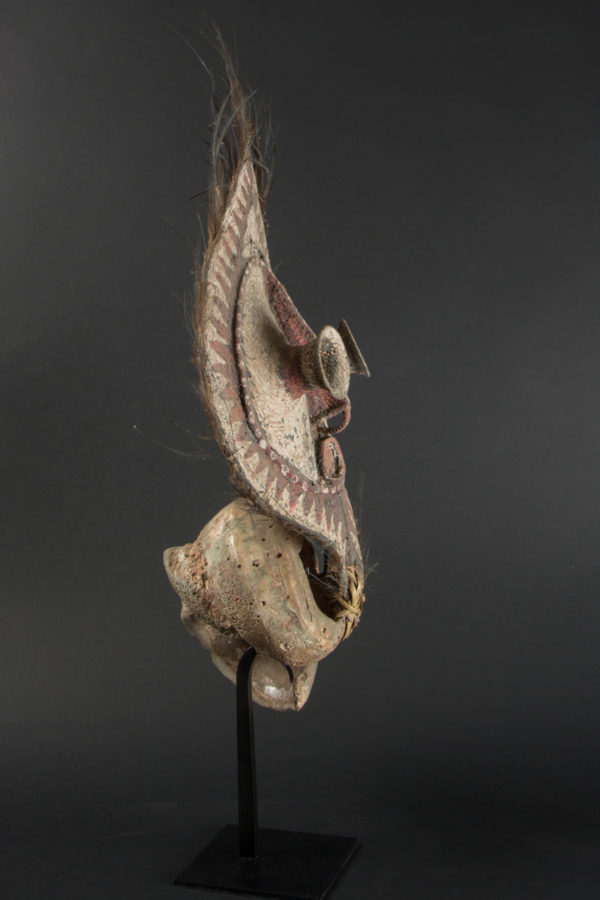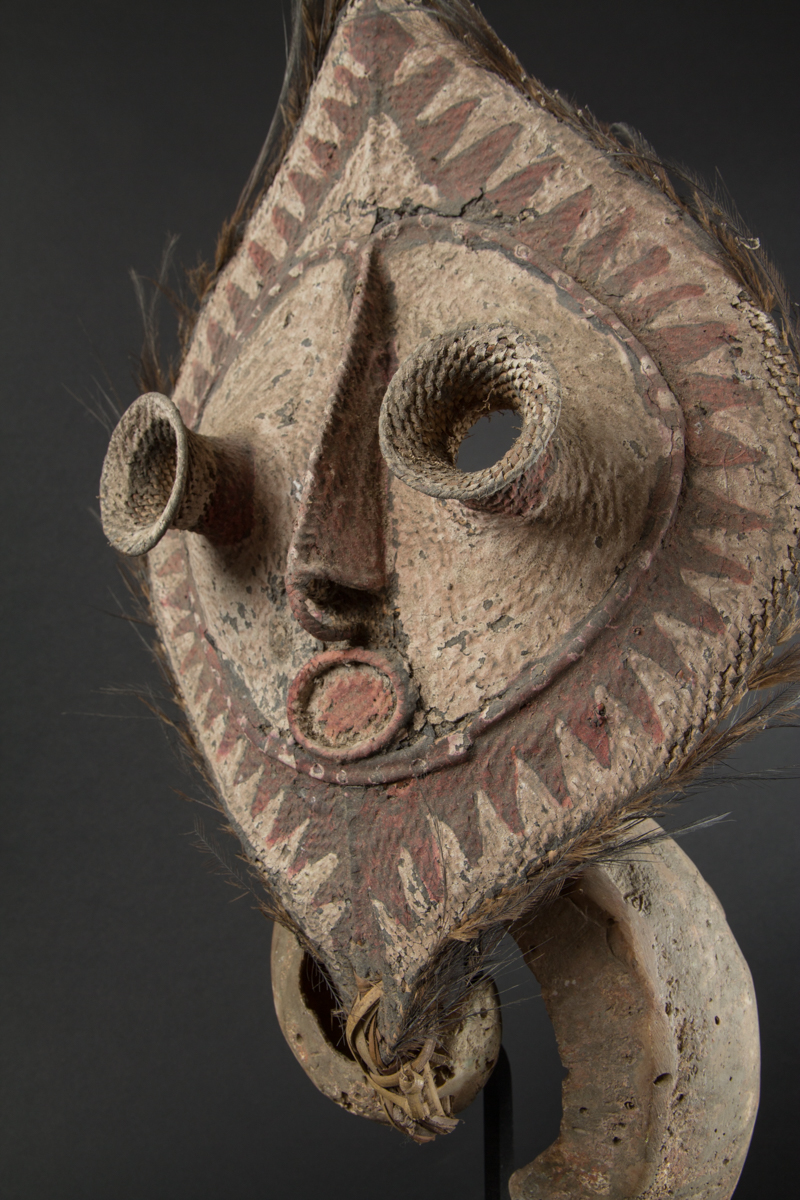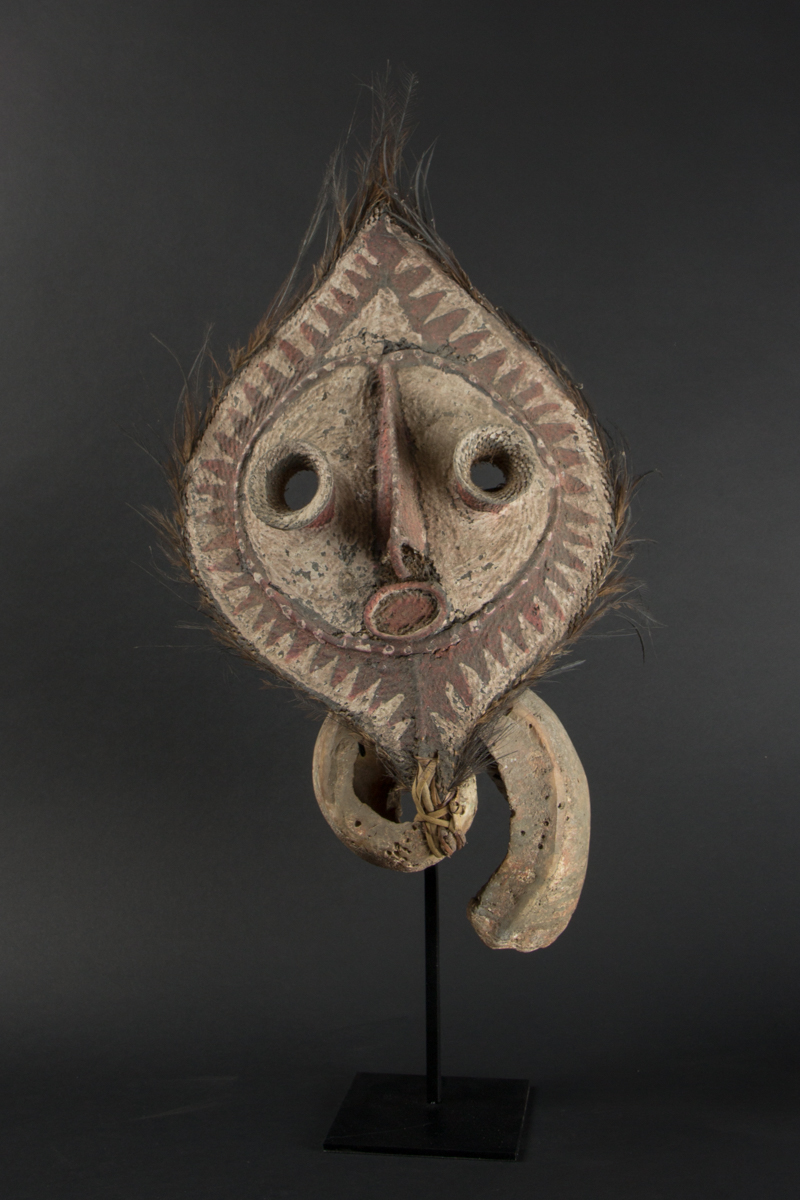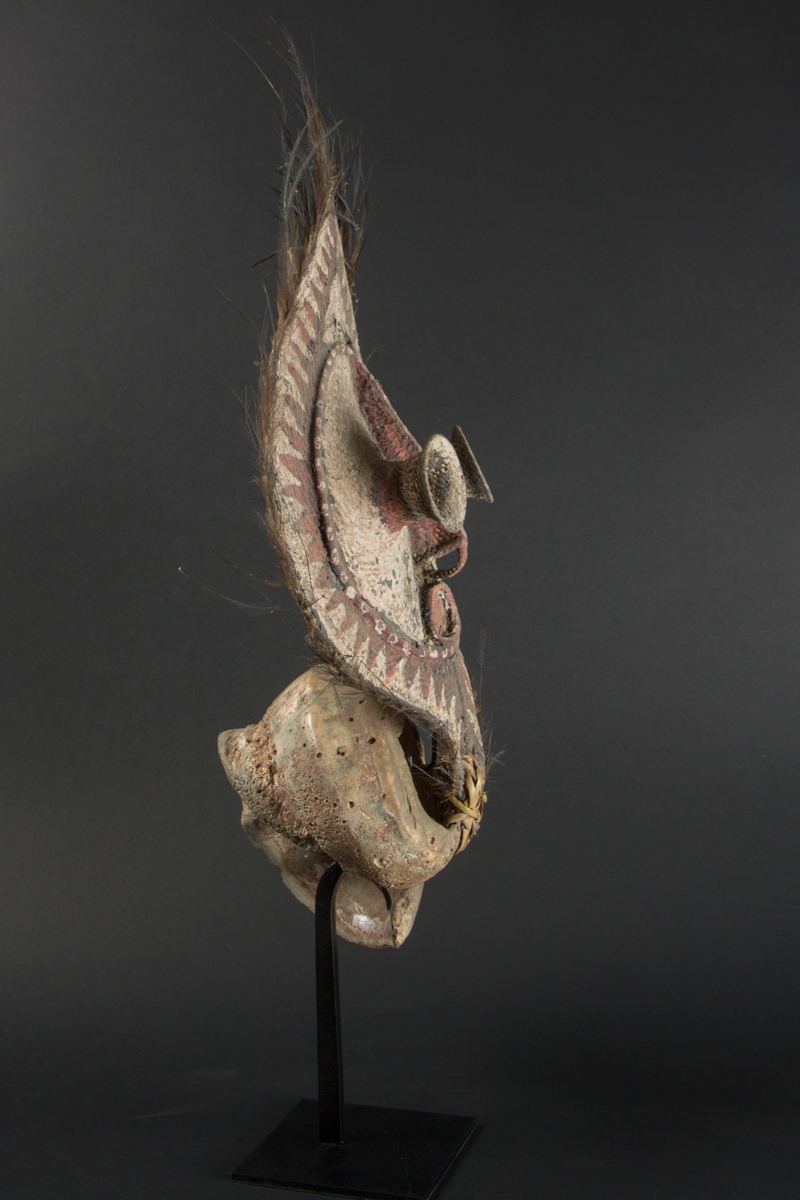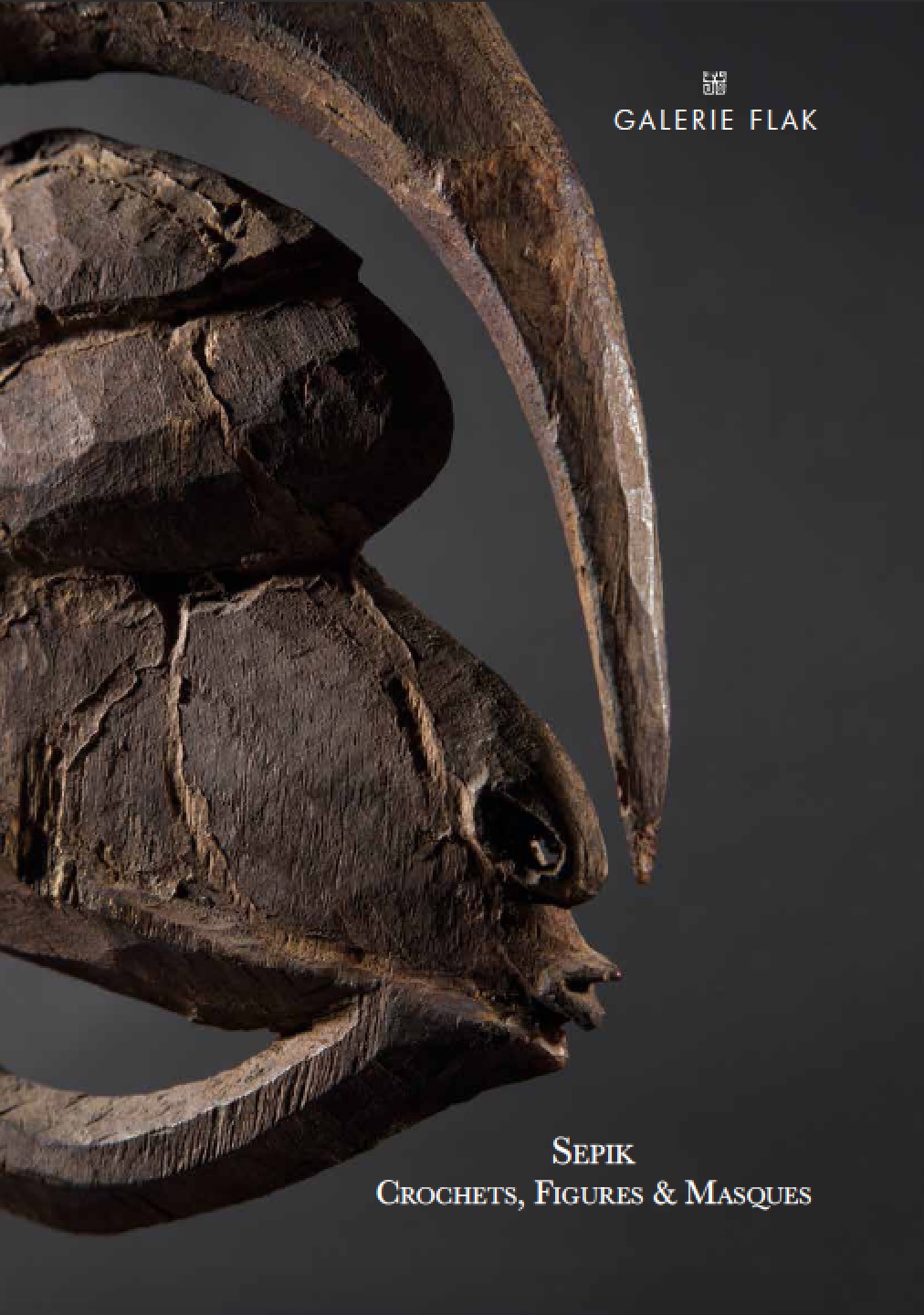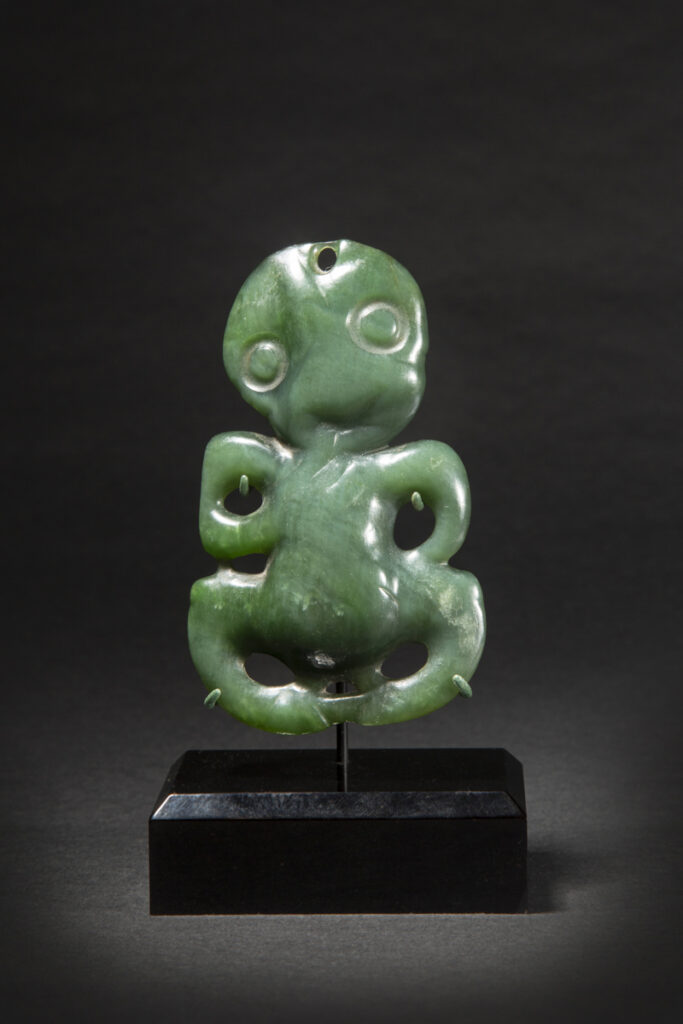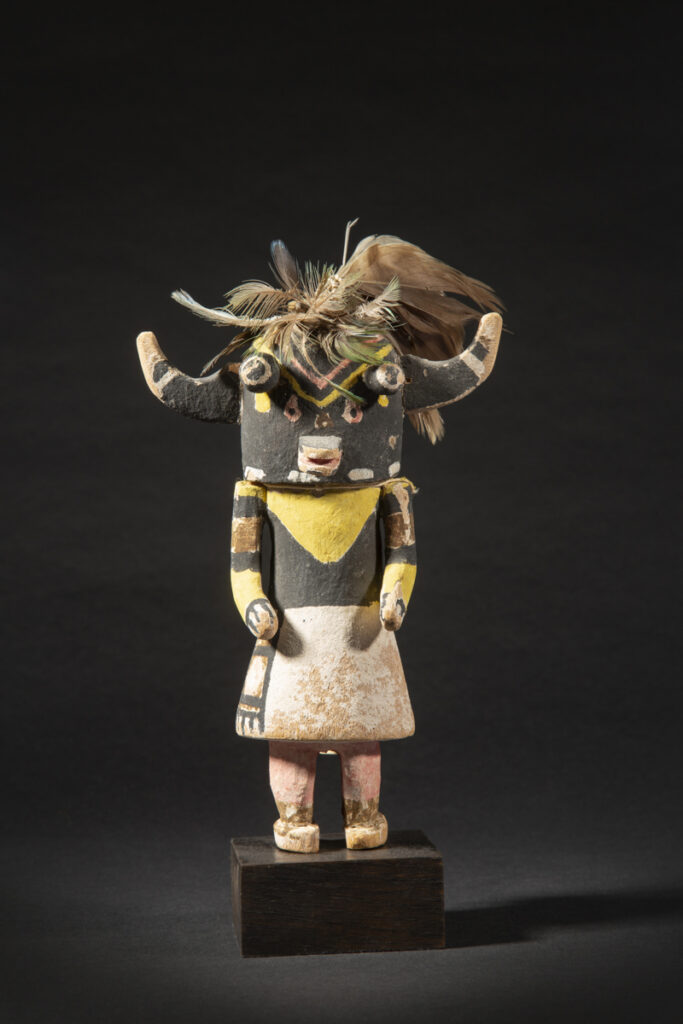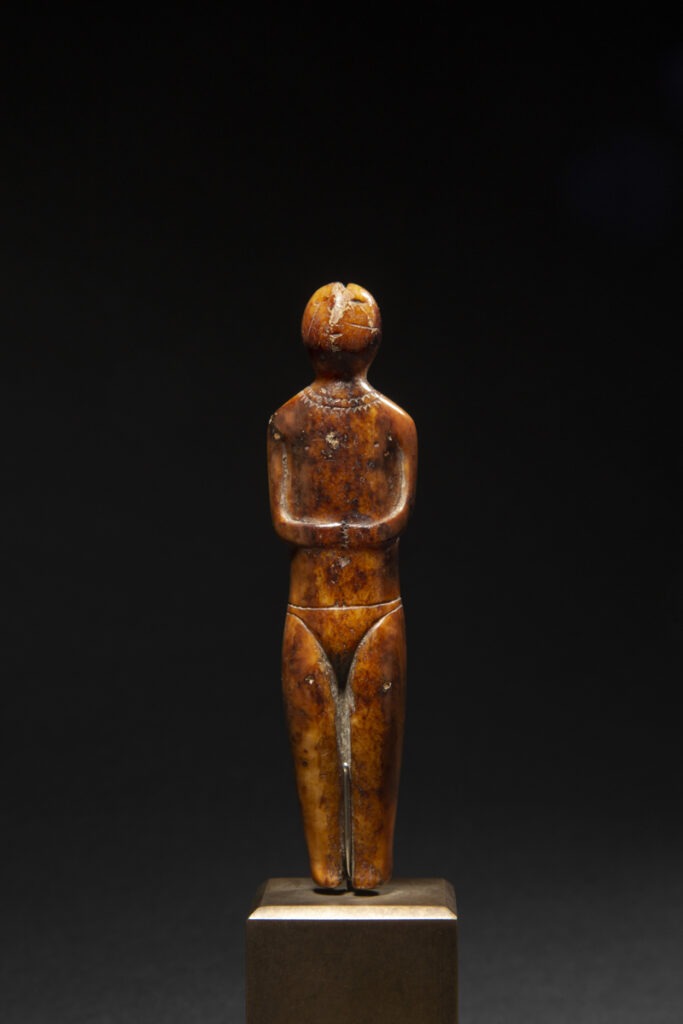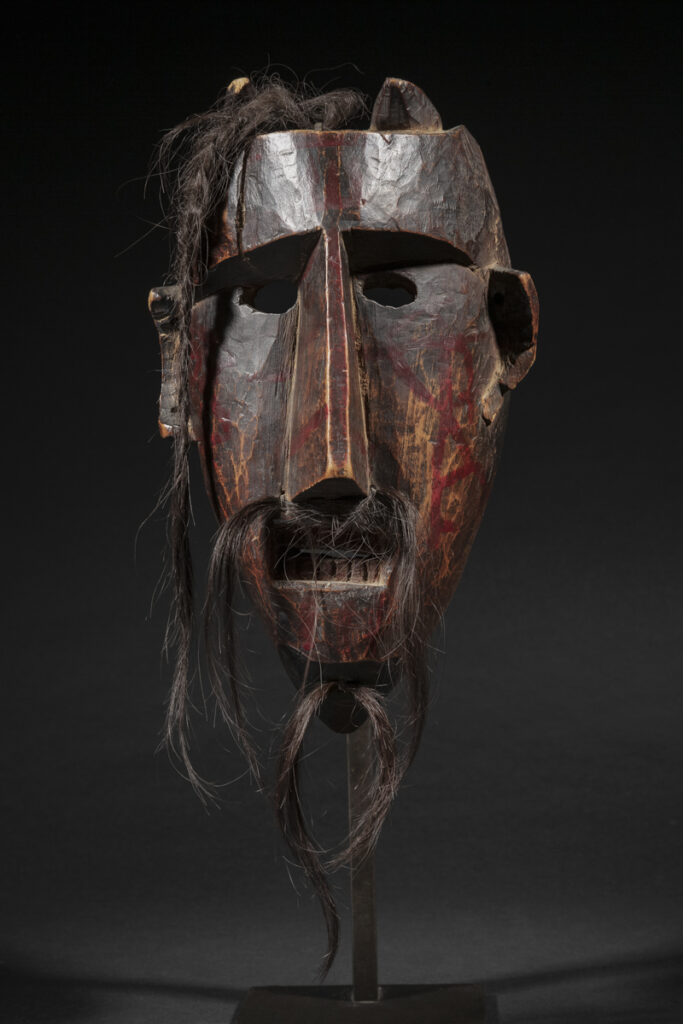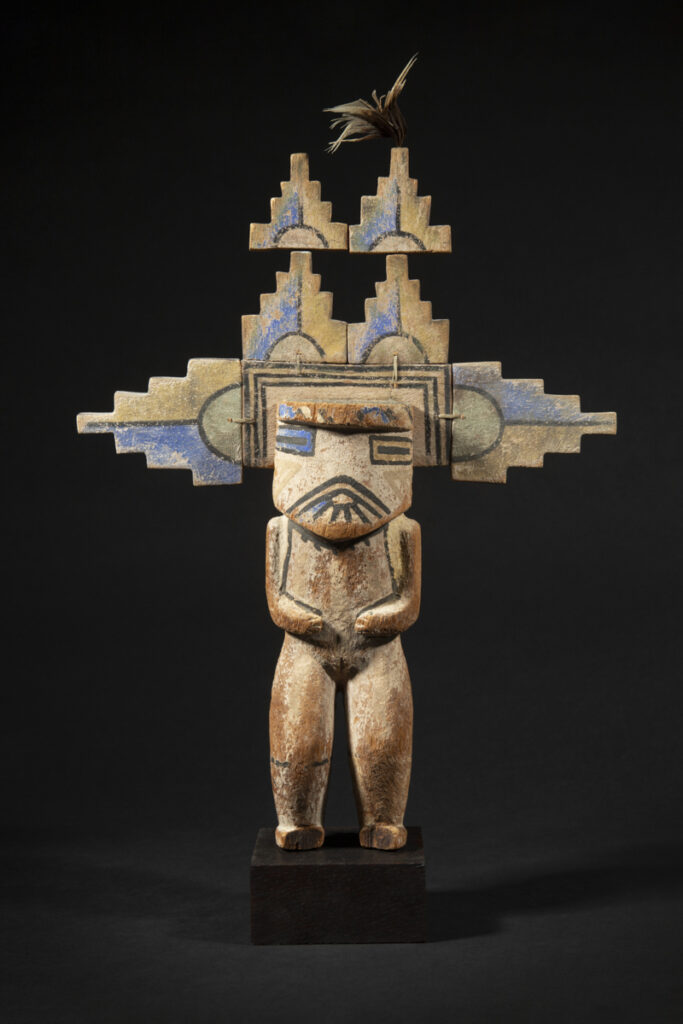oceania | Papua New Guinea
Boiken Currency
Papua New Guinea
Talipun bride price payment
Plaited face, shell, pigments and feathers
First part of the 20th century
Height: 23 ½ in. (60 cm)
Field-collected by Michael Kremerskothen, Dortmund
Published: Faces, visible - invisible, April 2021
Talipun currencies 42 and 60 cm / Galerie Flak
Price on request
The talipun is an important item of ceremonial exchange, particularly in bride-price payments among the Yangoru Boiken and Kubalia Boiken (Saussia) peoples of East Sepik Province in Papua New Guinea.
As stated by Ron May in “Talipuns - A Unique Boiken Artifact“ (in “Art of the Boiken”, Michael Hamson, 2011), talipuns and rings were sometimes ritually laid out (“lined”) in a formal pattern which was said to represent the body—arms, legs, head, and torso. Traditionally, up to twenty talipuns might be used in a single bride-price transaction. The accumulated wealth was subsequently distributed amongst the bride’s brothers and other relatives. Talipuns were also used in compensation exchanges following inter-clan or tribal warfare.
The currency presented here was field-collected by Michael Kremerskothen in Holik village, south of Yangoru in the 1990s.
As stated by Ron May in “Talipuns - A Unique Boiken Artifact“ (in “Art of the Boiken”, Michael Hamson, 2011), talipuns and rings were sometimes ritually laid out (“lined”) in a formal pattern which was said to represent the body—arms, legs, head, and torso. Traditionally, up to twenty talipuns might be used in a single bride-price transaction. The accumulated wealth was subsequently distributed amongst the bride’s brothers and other relatives. Talipuns were also used in compensation exchanges following inter-clan or tribal warfare.
The currency presented here was field-collected by Michael Kremerskothen in Holik village, south of Yangoru in the 1990s.
Explore the entire collection
